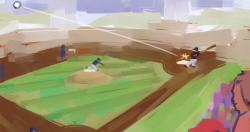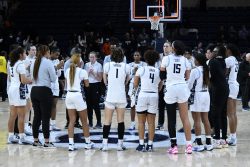One of America’s most-watched sports surprisingly made headlines this weekend, but not for any reason that actually has to do with an athlete’s performance or the outcome of a match. At the NASCAR Nationwide Series race at Daytona on Saturday, rookie driver Kyle Larson’s car was pushed from behind and ultimately lifted off the ground, slamming into the protective fencing along the side of the track. The front end of his car completely disintegrated, a tire flew off into the stands, and his engine was left sitting just in front of the seating area.
28 people ended up claiming to be injured from the debris sent through the catch fence, all of whom have since been released from the hospital. The most recent developments have dealt with news that three of the injured spectators are looking to file a lawsuit because of the accident and their personal injuries.
Apparently, these fans were unable to assume that sitting just yards from racecars traveling over 100 miles per hour involved risk of injury. When 43 rockets on wheels are bunched up onto a track and told to be the first to cross the checkered finish line, it really does not seem unreasonable at all that those sitting in the grandstands should be aware of the fact that they are in a dangerous position.
Matt Morgan, the lawyer representing the three spectators, will seek to argue that gross negligence caused the accident. How are people to know that a car can come flying into the stands? I guess this is how you know when a sport has true American fans, when spectators are literally yards away from racecars all jarring for position at speeds double that of freeway speed limits and then sue when those cars wreck. It does not take much mental effort to understand why sitting in the grandstands at a NASCAR race is dangerous.
Yes, the crash shall ignite calls for a reexamination of the strength of fences that line the grandstands, but regardless of how safe those fences are made, speeding chunks of metal are speeding chunks of metal. Crashes are part of the soul of motorsport racing. By the nature of the sport, these things are going to happen, and if fans want to be that close to the action, then they have to understand the risk.
The frustration on the side of NASCAR is completely understandable.
“Oh, Lord, if 20 people were injured they’ll have 25 lawsuits,” said former Charlotte Motor Speedway president H.A. “Humpy” Wheeler. “That’s just the way it is. There’s already lawyers sitting around preparing for this.”
The underlying reason for these threats of filing a lawsuit is greed. These spectators saw an opportunity to grab some free money and jumped on it. NASCAR, the company that makes the fences, the makers of the car, Daytona International Speedway, and everyone else Morgan claims to be possible entities in the suit should not have to pay out a dime. The claim that the fence in this case failed its purpose is laughable. This car was flying through the air at nearly 200 miles per hour, and the fence prevented any serious injuries from occurring—consider its purpose fulfilled.
The most probable outcome of this dilemma will be that NASCAR will settle with the three spectators outside of court and pay them more money than they deserve in order to save time and reduce the attention that has been directed toward the lack of safety at tracks. If anything though, maybe this wreck could be the start of something new for motorsports.
It could be the start of an era where using complete ignorance of the danger of speeding cars for personal gain is no longer acceptable. This wreck could set a precedent that will show all future spectators of NASCAR that, yes, those automobiles flying by in a roaring blur of colorful paint could in fact break apart during a crash and cause injury. Maybe then auto racing could make headlines for something more substantial than greedy fans.
Although this crash will most likely result in stronger, safer fences, it does not seem like fans care much about advances in fence technology. The day after the crash, the same section that was littered with debris the day before was packed with fans watching Sunday’s Daytona 500. None of the people sitting in the section took up the offer by the speedway that allowed them to move seats.
The fans that come to watch these races are dedicated, to the point where the threat of flying tires does not faze them. The three spectators who plan to sue should not need direct warnings about the risks involved with sitting so close to the track, common sense and a basic understanding of physics should do.




